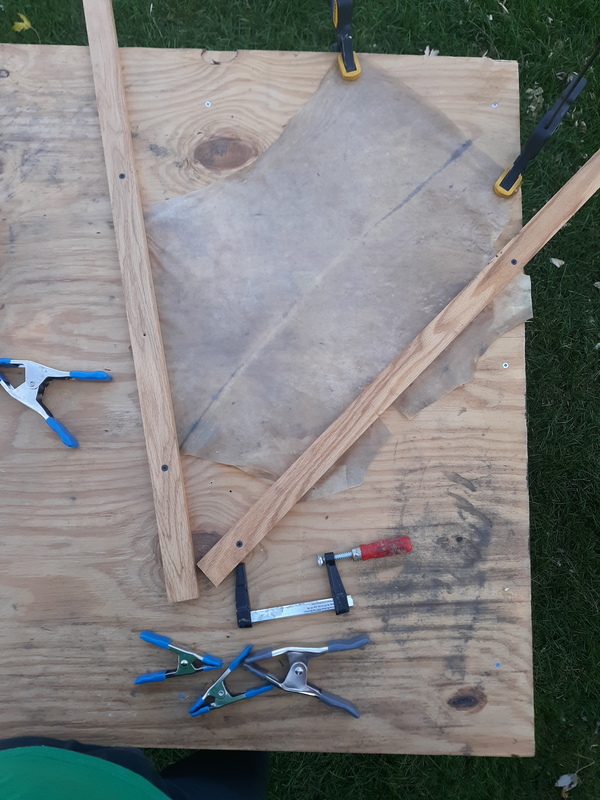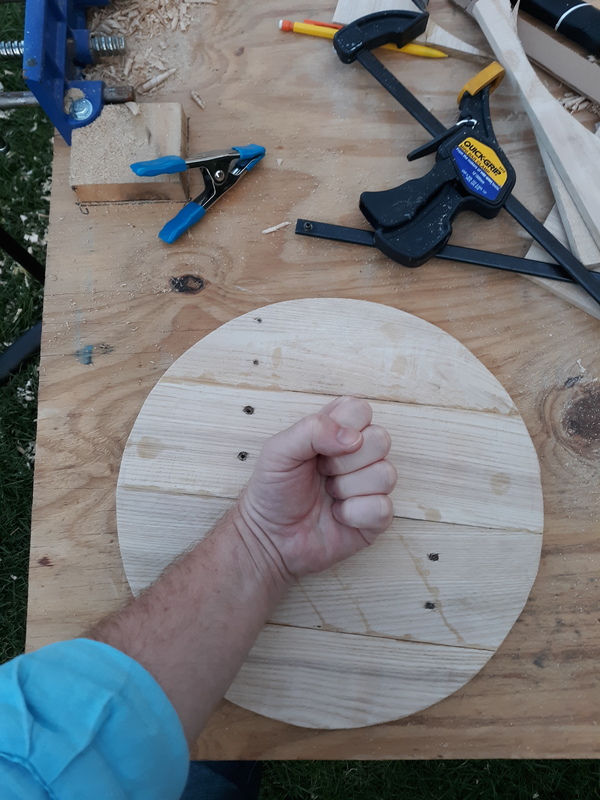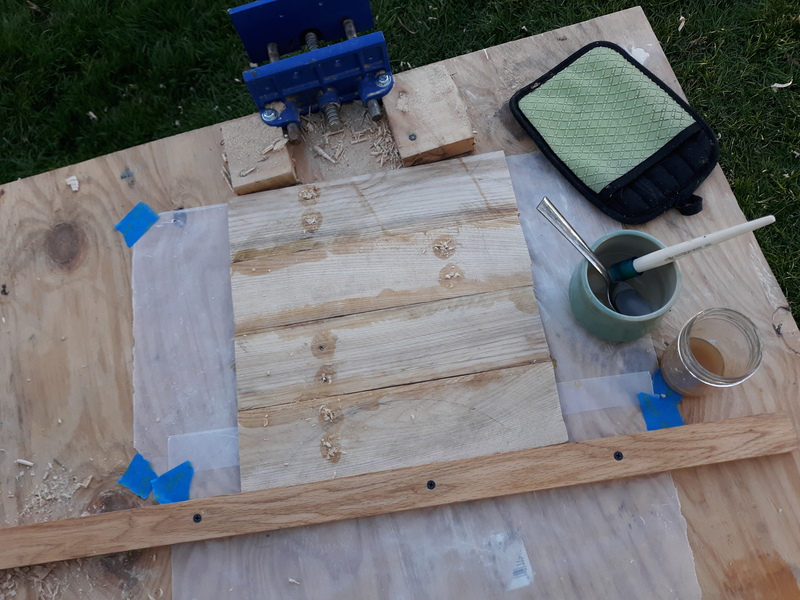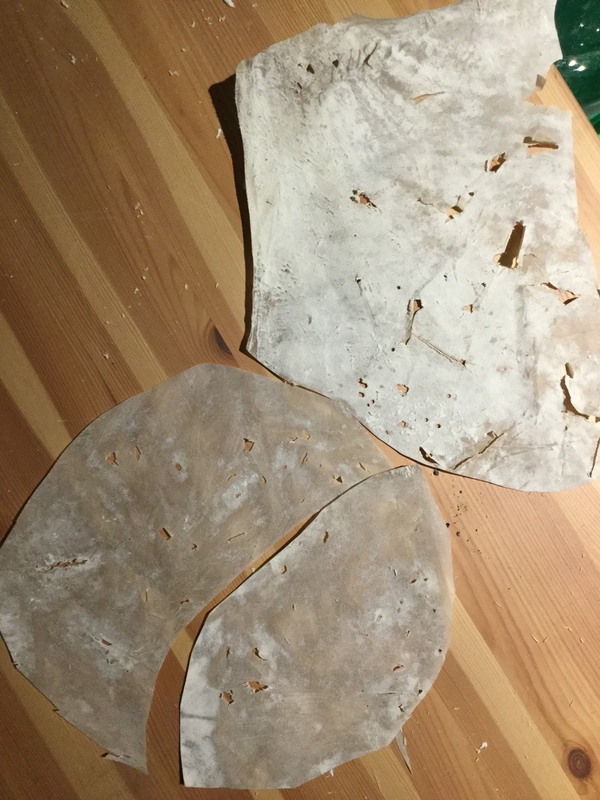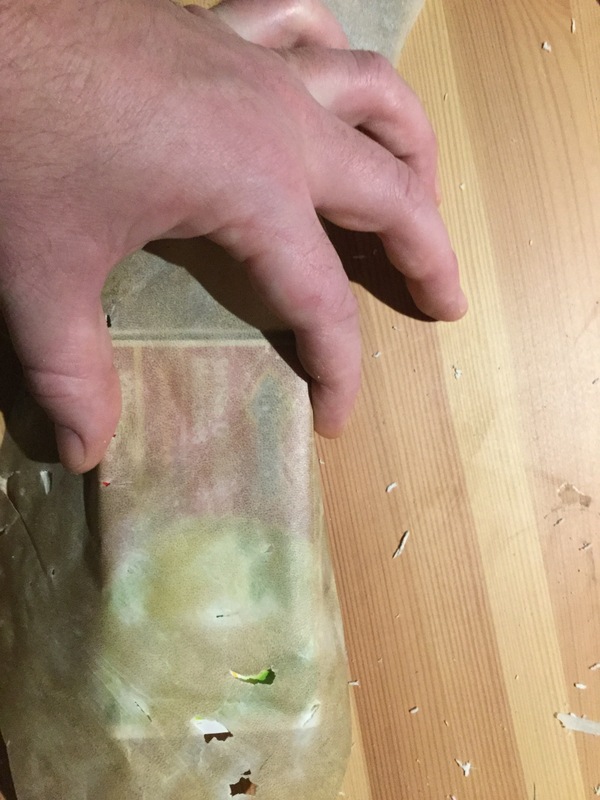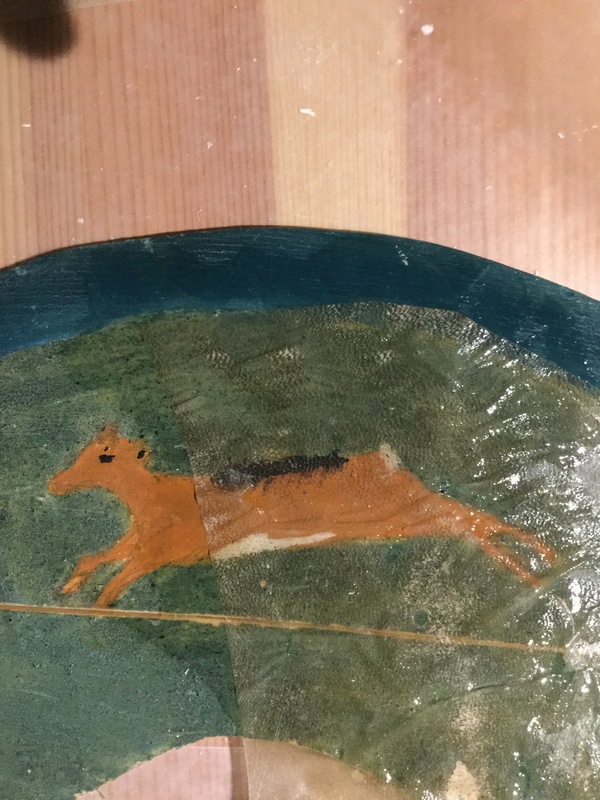I've been working on a basic wooden buckler inspired by the early bucklers thread here and Roland Warzecha's viking shield work on youtube. I'm using all hand tools (save a jigsaw for the circles) and as traditional of materials as possible. I'm considering this a first round of practice for recreating the painted kite shield (or perhaps just inspired by) from the Szcezcin find. Also just practice with the materials and processes.
So, we started from pine pallet wood. There are some sources mentioning pine, and it was available, so I went with it. I planed as much as I needed for the buckler down to about 8mm with a draw knife and a rasp. That was a lot of "fun." I have never worked with hide glue before, but I used hide glue to join the planks once planed down to the correct thickness. I then marked out the circle with a pencil on a string and cut it out.
I thinned down the edges to about 3mm with a rasp and sandpaper, tapering from as close to the center of the shield as possible. This is when it really started feeling like a buckler instead of just round piece of wood. I then marked out the center circle and drew the design that I wanted on the face.
Once the center was cut out, I began painting. I used historical pigments and an egg tempera base, once again inspired by Roland Warzecha's youtube work. Painting with egg tempera on wood was not that easy, even though I sanded the surface down with 360 grit sandpaper. A couple of coats later, I had this design. The thought is to subtly represent slavic pagan imagery with the deer and a lunar motif, the full moon being represented by the shield boss. Not a historical design, but I did look at medieval paintings for inspiration on the deer.
The rawhide is goat for the thinness, the picture shows it after soaking and being stretched slightly/flattened. In the next post I'll show thinning it down to translucence. The thought is that the Szczecin shield had a facing over the paint, as paint was found on the boards and it would have needed some kind of facing to be sturdy since it was just of planked construction. In the spirit of honing skills to recreate that shield, I am attempting that technique. Will have an update in a couple of days.
If anybody has experience with techniques related to any of these processes and has good pointers, I'm all ears! Thanks to everyone on this forum for the excellent resources.
Cheers,
Jeff
Videos in case anyone wants to see more of the process:
https://www.youtube.com/watch?v=y_4N2ncu1ng Joining and shaping
https://www.youtube.com/watch?v=uRSPpvONsds Painting
